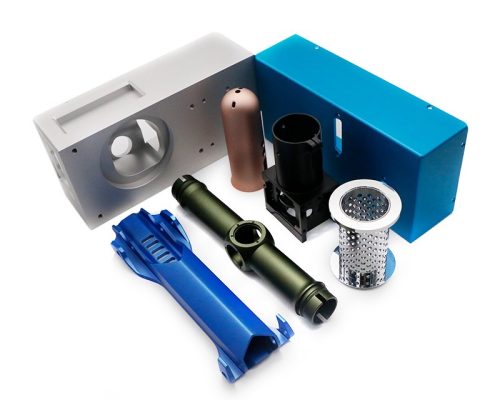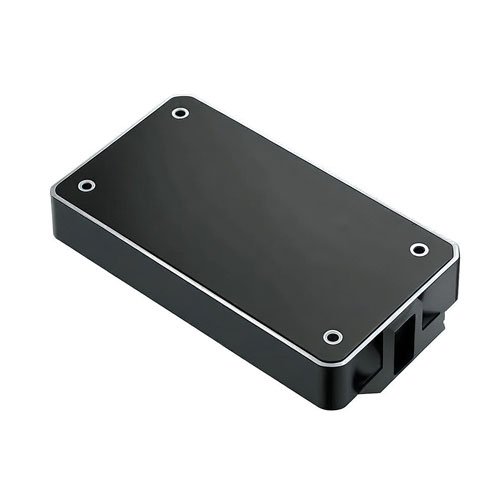Aluminum prototype manufacturing has gained traction in recent years, particularly due to its versatility, lightweight properties, and cost-effectiveness. When combined with 4 axis CNC machining, this method opens the door to precise, efficient, and innovative manufacturing solutions. In this article, we will delve into the technical aspects of aluminum prototype manufacturing in the context of 4 axis CNC machining, exploring the essential advantages and applications while also providing insights on how businesses can leverage these technologies to their benefit.
Understanding CNC Machining: A Brief Overview
CNC (Computer Numerical Control) machining is a manufacturing process that utilizes computer-controlled tools to produce parts and components from various materials. Unlike traditional machining, which relies on manual operator input, CNC machining automates the production process, resulting in enhanced precision, repeatability, and efficiency.
The Evolution of CNC Machining
Since its inception, CNC machining has undergone significant advancements, evolving from basic 2D milling to complex 4 axis machining. The shift towards more intricate designs and functionalities has driven the need for more sophisticated CNC systems.
Introduction to 4 Axis CNC Machining
4 axis CNC machining incorporates an additional rotational axis, allowing for greater flexibility in part design and production. In a traditional 3 axis system, movement is limited to three planes: X (horizontal), Y (vertical), and Z (depth). By adding a fourth axis, which typically rotates around the X or Y axis, manufacturers can produce complex geometries that would be challenging or impossible to achieve using 3 axis machining alone.
Benefits of Aluminum in Prototype Manufacturing
Aluminum has emerged as a preferred material in prototype manufacturing for various reasons, each contributing to its overall effectiveness in CNC machining.
Lightweight and Durable
Aluminum is known for its lightweight nature, which makes it an ideal choice for applications where weight reduction is crucial, such as in aerospace or automotive sectors. Despite its lightness, aluminum also boasts impressive strength characteristics, allowing for the production of durable prototypes that can withstand the rigors of testing and real-world applications.
Cost-Effectiveness
While some materials can be prohibitively expensive to work with, aluminum strikes a balance between affordability and quality. The relative ease of machining this material allows for reduced production times and lower labor costs, ultimately making it a cost-effective choice for prototype manufacturing.
Corrosion Resistance
One of aluminum’s standout properties is its natural resistance to corrosion, which is particularly beneficial for prototypes intended for outdoor or harsh environments. This quality ensures that prototypes maintain their integrity throughout testing and development phases.
Thermal Conductivity and Electrical Conductivity
Aluminum’s exceptional thermal and electrical conductivity makes it a favored material for prototypes that require efficient heat dissipation or electrical applications. This property is especially relevant in the design of components for automotive and aerospace industries.
The Synergy of Aluminum and 4 Axis CNC Machining
When aluminum is paired with 4 axis CNC machining, manufacturers can unlock unparalleled benefits that enhance the quality and precision of their prototypes.
Increased Design Flexibility
With the added rotational axis of 4 axis CNC machining, designers are no longer constrained to flat surfaces. This capability enables the creation of intricate designs with exceptional detail, including curved surfaces and complex geometric shapes.
Improved Accuracy and Repeatability
One of the primary advantages of CNC machining is its ability to produce components with extreme precision. The integration of 4 axis capabilities allows for enhanced accuracy in cutting and shaping aluminum, resulting in prototypes that closely match intended specifications.
Reduced Production Time
The automation of CNC machining significantly speeds up the manufacturing process. By reducing the need for manual adjustments and workpiece repositioning, 4 axis CNC machining allows for quicker production cycles, which is especially advantageous for prototyping, where iteration speed is critical.
Applications of Aluminum Prototype Manufacturing in Various Industries
Aluminum prototypes produced via 4 axis CNC machining find applications across a multitude of industries.
Aerospace Industry
The aerospace sector demands lightweight, durable, and high-performance components. Aluminum prototypes are often used for flight control surfaces, brackets, and other critical parts that must meet stringent safety and performance standards.
Automotive Sector
In the automotive industry, the use of aluminum prototypes can lead to substantial weight savings and improvements in fuel efficiency. From engine components to exterior trim, the applications are vast and varied.
Medical Devices
The medical field increasingly adopts aluminum prototypes for surgical instruments, housings for devices, and various components that require precision and reliability.
Technical Highlights of 4 Axis CNC Machining for Aluminum Prototypes
Understanding the technical nuances of 4 axis CNC machining can provide valuable insights for manufacturers looking to optimize their processes.
Toolpath Strategies
Creating efficient toolpaths is essential for optimizing machining time and ensuring precision. Advanced software can generate toolpaths that account for the intricate movements required in 4 axis machining, reducing the potential for errors and enhancing overall efficiency.
Fixture Design
The design of fixtures used to hold the aluminum workpieces is crucial in 4 axis machining. Properly designed fixtures minimize vibrations and movement, allowing for accurate machining and reducing the risk of defects in the final product.
Surface Finish Considerations
Achieving a superior surface finish is often a critical requirement in prototype manufacturing. The choice of cutting tools, feeds, and speeds can significantly influence the surface quality of machined aluminum parts, and these factors must be carefully calibrated to meet the desired specifications.
Best Practices for Aluminum Prototype Manufacturing
To fully leverage the advantages of aluminum and 4 axis CNC machining, manufacturers should adhere to several best practices.
Material Selection and Preparation
Selecting the right grade of aluminum and properly preparing it for machining can greatly impact outcomes. Ensuring that the material is free of contaminants and defects will contribute to higher-quality prototypes.
Regular Maintenance of CNC Machines
Maintaining CNC machinery is crucial for ensuring long-term performance and precision. Regular maintenance checks, calibration, and software updates can prevent issues that could compromise production quality.
Emphasizing Training and Skill Development
Given the complexity of 4 axis CNC machining, ongoing training for operators is essential. A well-trained team is better equipped to navigate challenges and implement the latest techniques to optimize production.
Conclusion: Elevate Your Prototyping with Aluminum and 4 Axis CNC Machining
Leveraging aluminum prototype manufacturing in tandem with 4 axis CNC machining opens new frontiers for industries looking to innovate and streamline their product development processes. The synergy of lightweight, durable materials and advanced machining capabilities permits manufacturers to produce high-quality prototypes with unprecedented efficiency and flexibility. As industries continue to evolve, the importance of adopting cutting-edge technologies and practices will only grow, presenting new opportunities for success in the competitive landscape of modern manufacturing.
—
- By adopting these approaches, your CNC machining plants can not only enhance brand awareness but also build long-lasting relationships with clients who value precision, quality, and innovation. Emphasizing the benefits of aluminum and 4 axis CNC machining will position your offerings as not only viable but preferred solutions for businesses across various sectors.


